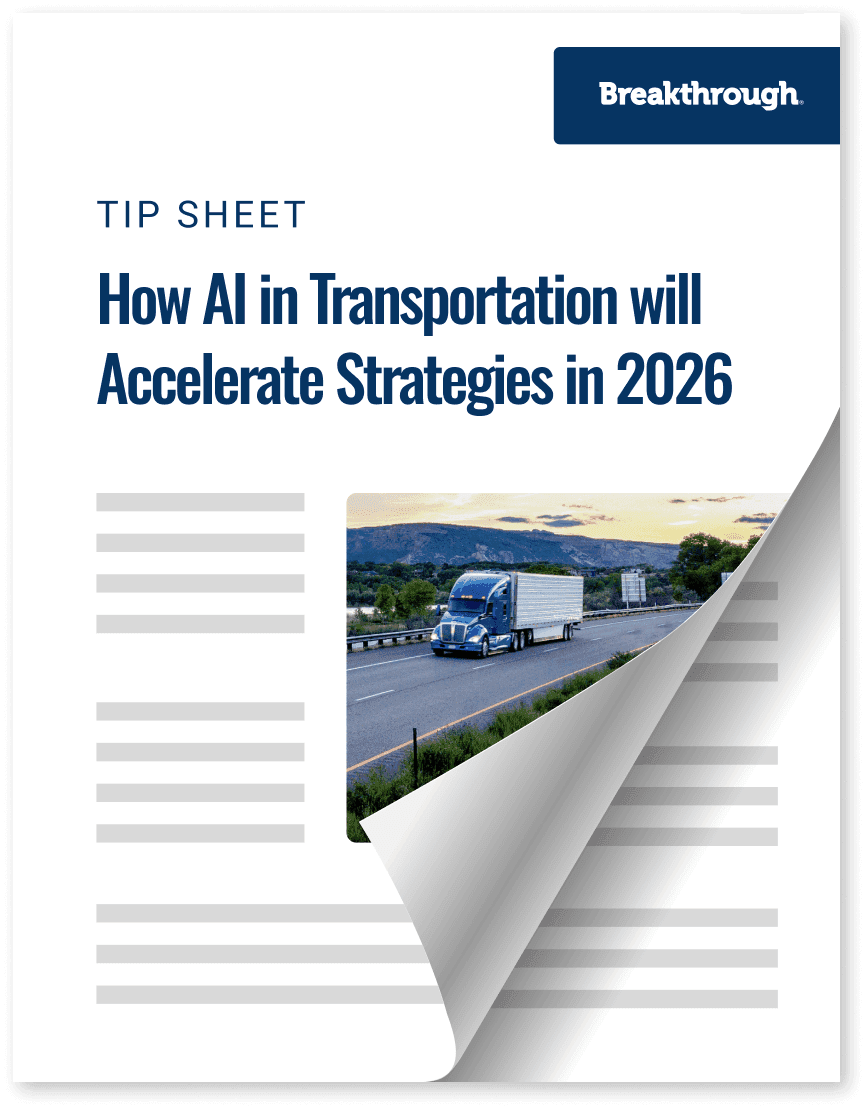How AI in Transportation will Accelerate Strategies in 2026

Trending
Top Posts
Fuel
Why Do Shippers Use The DOE Fuel Surcharge? A History Of The National Fuel Surcharge
5 min read
December 5, 2025
Market Events
How Ukrainian Drone Strikes on Russian Refineries Impact Your Fuel Costs
6 min read
November 20, 2025
Freight
The Definitive Guide on Fuel Management Systems
7 min read
November 11, 2025
5 min read
May 23, 2023

Share:
Table of contents
Browse the table of contents to jump straight to the part you’re looking for
The California Air Resources Board (CARB) approved the Advanced Clean Fleet (ACF) regulation in April 2023, requiring large carriers to transition to zero-emission vehicles (ZEVs) for medium- and heavy-duty fleets by 2045 — and even sooner for drayage and last-mile delivery applications.
Why? Because Californians are breathing some of the nation’s dirtiest air — namely due to the state’s high level of transportation activity. While trucks only comprise 6% of the state’s fleet, these 8,500-plus-pound vehicles represent a quarter of transportation greenhouse gas (GHG) emissions in California.
This ruling is one of several climate legislation on the horizon, and its aggressive timeline sends a clear signal to the transportation industry that the time to decarbonize is now. But making this shift is a tall order due to the complex nature of modern transportation networks. The good news is that by identifying the right transportation management partner and leveraging relevant and actionable data to set science-based targets (SBTs), transportation and sustainability teams can reduce transportation emissions and maintain compliance with emerging legislation.
The imminent deadline for California’s ACF creates urgent considerations for transportation and sustainability teams. These professionals also face pressure from the Environmental Protection Agency (EPA), which released its latest emission standards in April 2023, including standards for Class 8 trucks.
But despite rising pressure to make operations more sustainable, the complexity of modern transportation networks means decision-makers often (and understandably) don’t know where to start. For instance, GHGs emitted outside an organization’s value chain make up 70-90% of a shipper’s total GHG output. But these scope 3 emissions are also the most difficult to quantify and reduce. And since shippers must now account for a vehicle’s full life cycle of emissions — without using carbon offsets — the ability to measure scope 3 emissions is paramount.
Additionally, while the ACF regulation provides participants in California more incentive than ever to pilot ZEV technologies, scarce supply of ZEVs and charging infrastructure means it will be years before these vehicles are practical at scale. And although this ruling is an important signal for long-term regulation, it won’t do much to help shippers with their near-term carbon abatement goals.
The bottom line? Shippers are going to need to find alternative ways to manage and reduce their emissions in the short term.
The path to reaching your net-zero goals may seem daunting. But with the right transportation management partner and a focus on SBTs, it doesn't have to be. The Science Based Targets initiative (SBTi) provides organizations evidence-based guidelines to reduce GHG emissions, including scope 3. And the framework doesn’t just help you set SBTs and measure sustainability progress — it also opens the door to stronger shipper-carrier partnerships through increased transparency and collaboration.
By working toward SBTs consistent with the latest climate targets, you can make actionable and measurable progress toward scope 3 emissions reduction. Consider the following ways to ensure you get the most out of your sustainability efforts:
It’s crucial to establish internal alignment before seeking external help. Active dialogue between stakeholders, from sustainability and supply chain professionals to C-suite executives and transportation teams, helps your organization set realistic targets that align with the organization’s resource availability and business objectives. For successful cross-functional collaboration, prioritize transparency and implement a channel for ongoing communication.
Engagement with a strategic transportation management partner is crucial in meeting your organization’s SBTs. To get the most out of your partnership, look for organizations with industry expertise, in-depth knowledge of STBi and GHG protocols, and a clear understanding of real-world supply chain mechanisms. The right partner can also help you access and organize comprehensive data, enabling you to make worthwhile shifts to your transportation network that contribute to your overall emissions reduction targets.
Data becomes even more crucial to your bottom line as you work toward meeting your SBTs. And while you have access to valuable data internally, your suppliers and carriers likely own most of your scope 3 emissions data. By creating mutually beneficial relationships, you can work with your network partners to establish an avenue for sharing data and meeting targets together.
If you’re a shipper with significant carbon reduction targets that plans on achieving those goals exclusively via ZEVs, you need to revisit your strategy. There are plenty of ways to reduce your carbon footprint that don’t involve ZEVs. Instead, follow the three steps above and set your sights on executing a wide-ranging strategy to reduce your carbon footprint.
Companies that take this portfolio approach (and have the right partners) often revise their targets to make them more aggressive. For example, if your company’s current goal is to transition half your fleet to EVs by 2028, innovation in charging infrastructure may or may not help you meet this goal on an accelerated timeline. Either way, reassess your SBTs periodically to ensure they align with market and technological feasibility, and developing climate policy.
It’s time to embrace evidence-based targets that provide clear guidance on how to reduce transportation emissions. A strategy based on corporate sustainability goals set through the SBTi, coupled with support from the right transportation management partner, can help your organization maintain compliance with climate legislation — and maybe even exceed global reduction trends.
Schedule a demo of CleanMile to learn more about how you can track your transportation network’s carbon footprint and reduce scope 3 transportation emissions.

5 min read
December 5, 2025
The DOE fuel surcharge is an outdated, inaccurate method for fuel reimbursement. Learn why it costs you money and discover a modern, market-based alternative.
Read more
6 min read
November 20, 2025
Understand the impact of Ukrainian drone strikes on Russian refineries. Learn why diesel prices are volatile and how to protect your budget from market shocks.
Read more
7 min read
November 11, 2025
Discover how fuel management systems cut costs, track emissions, and improve reimbursement accuracy for modern freight operations.
Read more